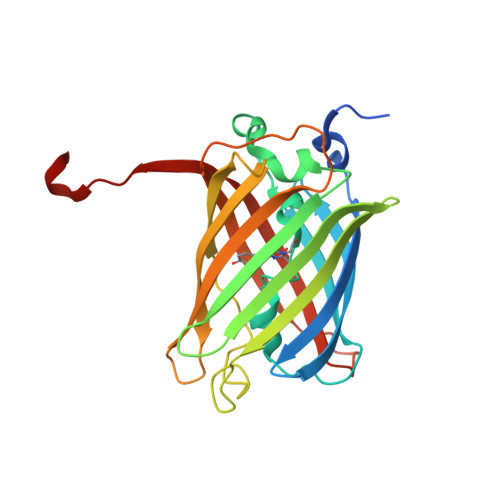A reversibly photoswitchable GFP-like protein with fluorescence excitation decoupled from switching.
Brakemann, T., Stiel, A.C., Weber, G., Andresen, M., Testa, I., Grotjohann, T., Leutenegger, M., Plessmann, U., Urlaub, H., Eggeling, C., Wahl, M.C., Hell, S.W., Jakobs, S.(2011) Nat Biotechnol 29: 942-947
- PubMed: 21909082
- DOI: https://doi.org/10.1038/nbt.1952
- Primary Citation of Related Structures:
3ST2, 3ST3, 3ST4 - PubMed Abstract:
Photoswitchable fluorescent proteins have enabled new approaches for imaging cells, but their utility has been limited either because they cannot be switched repeatedly or because the wavelengths for switching and fluorescence imaging are strictly coupled. We report a bright, monomeric, reversibly photoswitchable variant of GFP, Dreiklang, whose fluorescence excitation spectrum is decoupled from that for optical switching. Reversible on-and-off switching in living cells is accomplished at illumination wavelengths of ∼365 nm and ∼405 nm, respectively, whereas fluorescence is elicited at ∼515 nm. Mass spectrometry and high-resolution crystallographic analysis of the same protein crystal in the photoswitched on- and off-states demonstrate that switching is based on a reversible hydration/dehydration reaction that modifies the chromophore. The switching properties of Dreiklang enable far-field fluorescence nanoscopy in living mammalian cells using both a coordinate-targeted and a stochastic single molecule switching approach.
Organizational Affiliation:
Max Planck Institute for Biophysical Chemistry, Department of NanoBiophotonics, Göttingen, Germany.
















